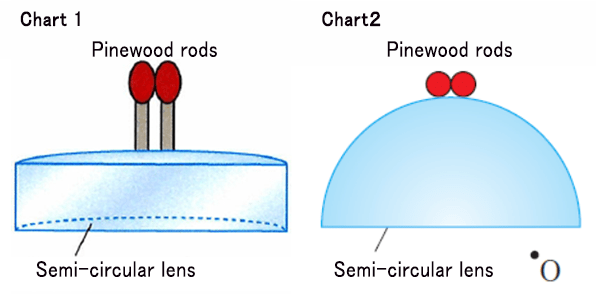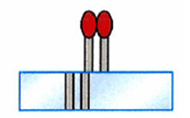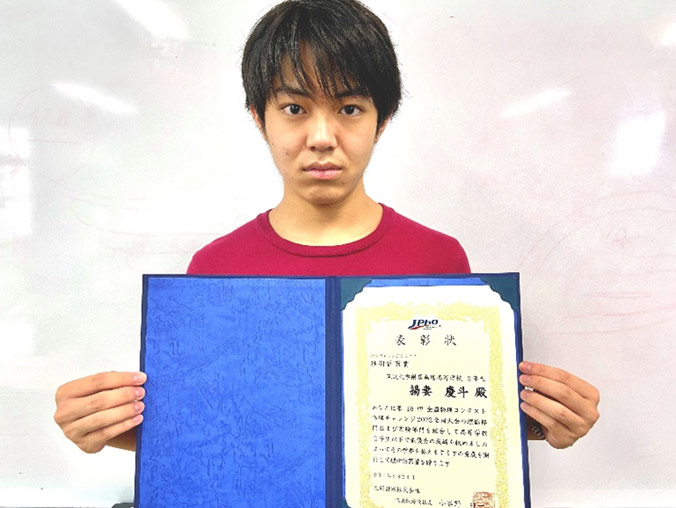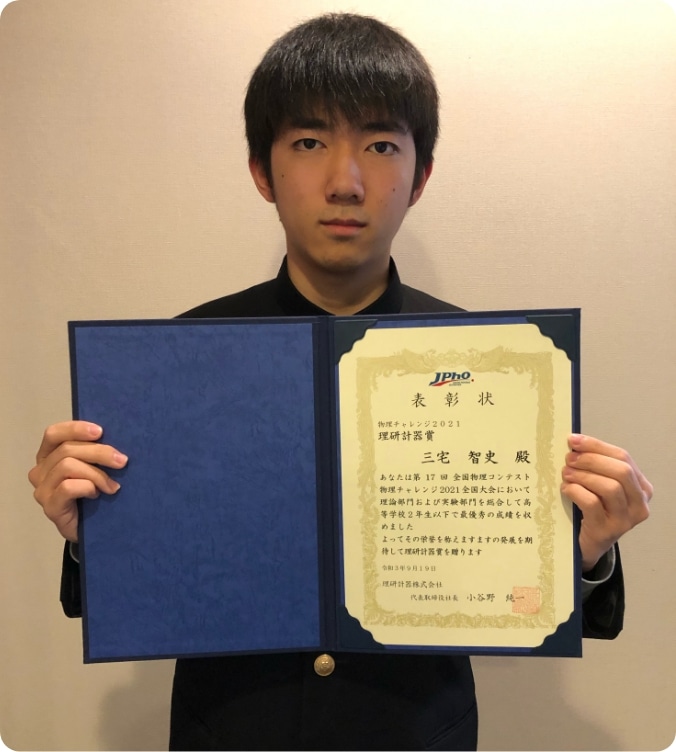Challengers to this quiz
Number of PeopleIt's a brain teazer related to
the Physics Olympiad!
Quiz for beginners
Two equal-length pinewood rods are placed on the curved surface of a semi-circular lens. Figure 1 shows what you see from the front, and Figure 2 shows what you see from directly above.

When you look at the semi-circle lens from the point 0 in Figure 2, how do the two matched bars look? Select from the next A to D. Explain why.

This quiz is created with the aim of making physics interesting!
Have you ever heard of
the International Physics Olympiad
a world competition primarily for high school students?
What is The International Physics Olympiad?

The International Physics Olympiad is an international physics competition primarily for high school students.
Every year, many high school students who love and are good at physics gather from all over the world and improve each other through the contest! Japan hosted the event for the first time in 2023.
"Physical Challenge" contests are held every year in Japan.
The RIKEN KEIKI Award will be presented by RIKEN KEIKI, which has developed industrial gas detection and alarm devices (Optical interferometric principle* as an example of a sensor principle using physical law, etc.). The winner of the RIKEN KEIKI Awards will be a candidate to represent Japan in next year's International Physics Olympiad.
(There are several awards for which the right of participation can be obtained.)
※Sensor principle of RIKEN KEIKI
RIKEN KEIKI has developed a wide variety of in-house sensor technologies, from the optical interferometry that was the foundation of the company to the new ceramics that utilize ultrafine particle oxidation catalysts. The lightwave interferometry, which uses the properties of light as a physical law, is our oldest gas detection sensor that captures changes in the refractive index of gases. It has long been used to measure methane concentration in coal mines. In recent years, it has been widely used as a sensor for measuring solvent concentration and measuring the calorific value of fuel gas, such as natural gas.
Answer:
B

[Reason]
Since light is refracted by the boundary surface of the semicircular lens, the lower of the two matchsticks both appear to be shifted to the left.
[Explanation]
This phenomenon is called refraction of the light.
Imagine a line perpendicular to the boundary plane of the lens.
The angle created by this perpendicular line and the incident light is called the angle of incidence, and the angle created by this perpendicular line and the refracted light is called the angle of refraction.
When light travels from the glass into the air, the angle of refraction is greater than the angle of incidence.
Conversely, when light travels from the air into the glass, the angle of refraction is less than the angle of incidence.
In either case, it would be better to image a larger corner on the air side.
As shown in the figure on the right, the light from the lower side of the match bar to the point 0 through the lens is refracted at the boundary of the lens to reach point 0 (the eyes of the observer).
To the observer's eye, the lower of the two matchsticks both appear to be shifted to the left, like the dotted line 0 on the straight line of the light path from point 0 to the boundary plane.
Try the quiz and if you find physics interesting
why don't you try the Physics Challenge?
Physics Challenge
The Physics Challenge is held mainly for junior high and high school students who are spreading the appeal of physics.
Even those who have not touched on physics to date
To participate in the International Physics Olympiad, an international competition, students (Japan) must be among the top 12 students in their second year of high school or younger (Japan national team candidates) in the Physics Challenge, and after six months of training, must be among the top five students in the final exam.

RIKEN KEIKI Award

The award will be given to the best high school sophomore or younger in the second challenge of the Physics Challenge, synthesizing theory and experimentation.
The winner will also be one of the candidates for the Japanese national team at the International Physics Olympics the following year.





